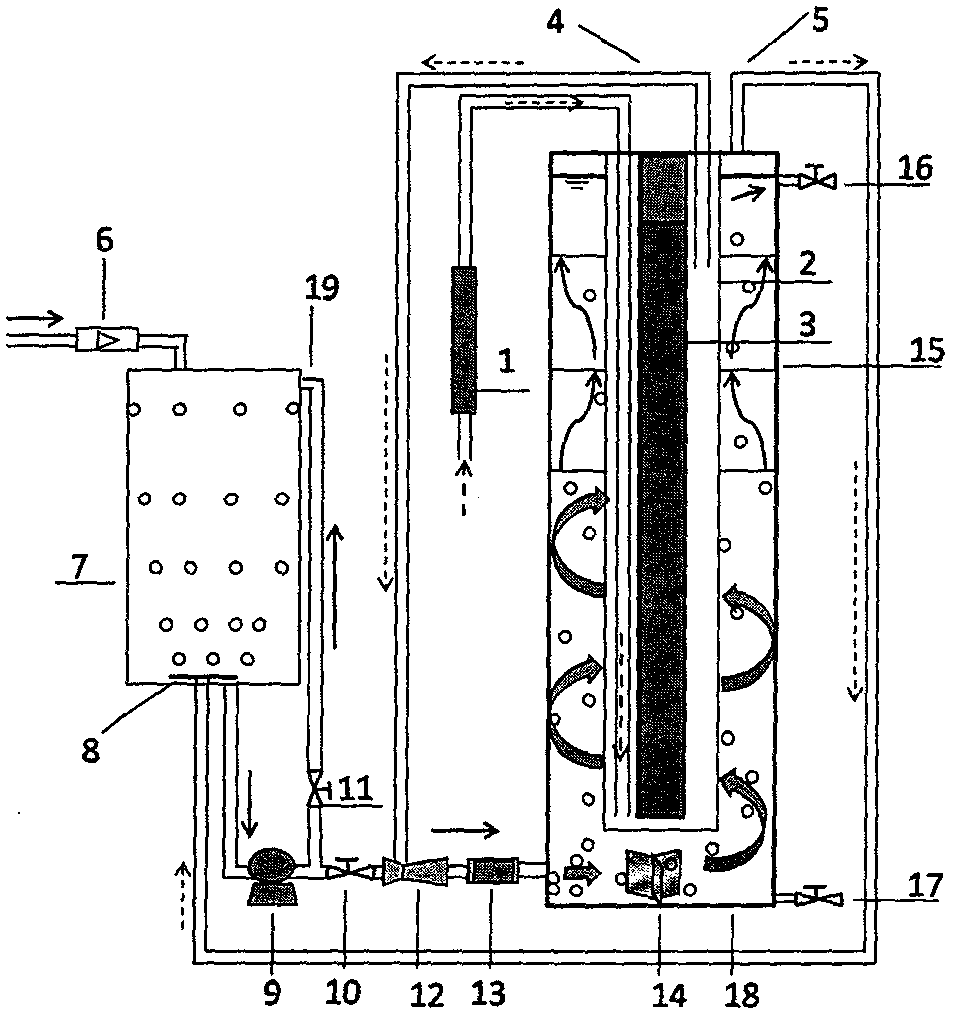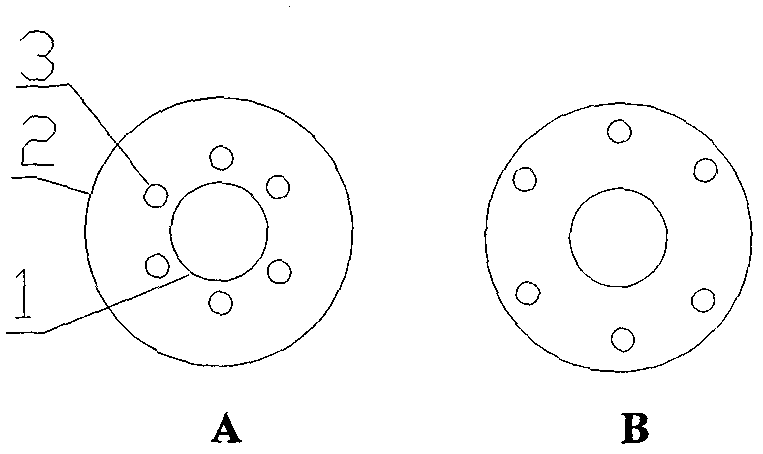Ultraviolet-photochemical compound water purifying process and device capable of realizing synchronous cleaning
A water purification device and photochemical technology, applied in the directions of oxidized water/sewage treatment, light water/sewage treatment, magnetic field/electric field water/sewage treatment, etc. Large odor and other problems, to achieve the effect of convenient operation and maintenance, small footprint and simple structure
- Summary
- Abstract
- Description
- Claims
- Application Information
AI Technical Summary
Problems solved by technology
Method used
Image
Examples
Embodiment 1
[0021] Surface water often contains organic matter such as humus, which can absorb ultraviolet energy and reduce the effect of ultraviolet disinfection. Use tap water to prepare water to be treated containing Escherichia coli and humic acid, wherein the total number of Escherichia coli is 1.2×10 6 CFU / L, humic acid is 2mg / L. The air flow rate is 90L / h, the ozone production amount is 0.66mg / L (mixed gas), and the treatment effects on E. coli and humic acid are shown in Table 1 when the treated water volume is 540L / h and 900L / min. It can be seen that the treated water volume increases by nearly doubled, the pathogenic bacteria inactivation rate and humic acid removal rate changed little.
[0022] Table 1 embodiment 1 processing effect
[0023]
Embodiment 2
[0025] The difference in the amount of air intake leads to the difference in the ozone production rate, the difference in the photooxidation efficiency leads to the difference in the sterilization efficiency, and the initial concentration of pathogenic bacteria also has a certain influence on the inactivation rate. Use tap water to prepare water to be treated containing Escherichia coli and humic acid, wherein the total number of Escherichia coli is 1.5×10 6 CFU / L, humic acid is 2mg / L. The air flow rate is 120L / h, the ozone production is 0.82mg / L (mixed gas), and the treated water volume is 540L / h and 900L / min. The treatment effects on Escherichia coli and humic acid are shown in Table 2. The results showed that increasing the air intake increased the humic acid removal rate; the initial total number of pathogenic bacteria increased, but the inactivation rate was almost unaffected.
[0026] Table 2 embodiment 2 processing effect
[0027]
Embodiment 3
[0029] Due to the presence of particulate matter in surface water, water turbidity often affects UV penetration and disinfection effectiveness. Use tap water to prepare water containing Escherichia coli to be treated, and the total number of Escherichia coli is 9.3×10 5 CFU / L, adjust the turbidity of water with kaolin, respectively 3NTU and 5NTU. The air flow rate is 120L / h, the ozone production is 0.82mg / L (gas mixture), and the treated water volume is 540L / h. The inactivation effect on Escherichia coli is shown in Table 3. The results showed that common surface water turbidity had little influence on the bactericidal efficiency in this reaction system.
[0030] Table 3 embodiment 3 processing effect
[0031]
PUM
| Property | Measurement | Unit |
|---|---|---|
| magnetic flux density | aaaaa | aaaaa |
Abstract
Description
Claims
Application Information
 Login to View More
Login to View More - R&D
- Intellectual Property
- Life Sciences
- Materials
- Tech Scout
- Unparalleled Data Quality
- Higher Quality Content
- 60% Fewer Hallucinations
Browse by: Latest US Patents, China's latest patents, Technical Efficacy Thesaurus, Application Domain, Technology Topic, Popular Technical Reports.
© 2025 PatSnap. All rights reserved.Legal|Privacy policy|Modern Slavery Act Transparency Statement|Sitemap|About US| Contact US: help@patsnap.com



